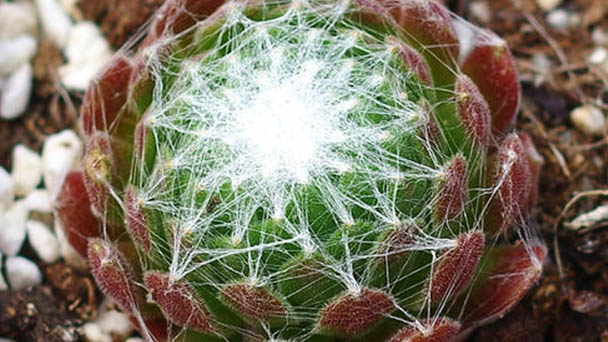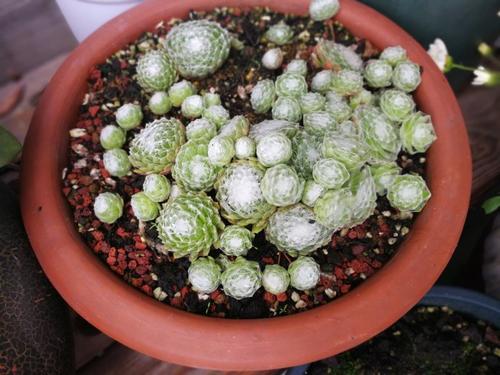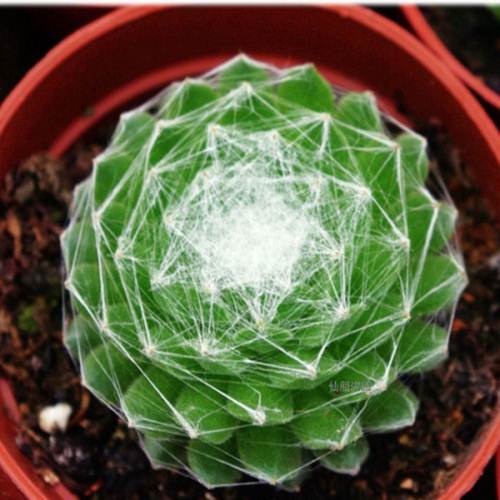How to grow and care for cobweb hen and chick
Written by Maggie
Feb 03 2021

Appropriate light and temperature should be ensured when we grow and care for Cobweb hen and chick. Shading and cooling are required for the high ambient temperature in summer, and warm indoor curing is required for the low ambient temperature in winter. Water and fertilizer control should also be reasonable, as far as possible in the growing season to keep the basin soil moist, fertilizer can be applied once a month, but also to prevent and control pests and diseases. Pay attention to water that does not splash to the center of the flower, dormant plants should be timely cut off water. Now, let's see growing cobweb hen and chick care.
1. Moderate light and temperature care for growing cobweb hen and chick
The suitable growth temperature of Cobweb hen and Chick is 18-22°C. Only in an appropriate temperature environment can Cobweb hen and Chick grow and flourish. When we grow and care for cobweb hen and chick, high ambient temperature in summer requires shade and cooling, while low ambient temperature in winter requires placing flower pots in a warm room to avoid freezing damage, and ensuring adequate illumination to avoid poor plant growth.
2. Reasonable water and fertilizer care for growing cobweb hen and chick
When we grow and care for cobweb hen and chick, fertilization control should also be appropriate, especially in spring and autumn when plants are growing well. Keep the soil moist as much as possible, but avoid water that can rot the roots. At the same time to ensure sufficient nutrients, fertilizer can be applied once a month to ensure adequate plant nutrients. The rest of the season to reduce watering, as far as possible to keep the basin soil dry, less fertilizer.
When we grow and care for the cobweb hen and chick, be careful to water along the edge of the pot to avoid splashing over the center of the flower, or the mesh may disappear and may lead to broken hearts. Plants may enter dormancy state when the ambient temperature is too high or too low. Water should be gradually cut off when the temperature is over 35℃ in summer and below 3℃ in winter to ensure the smooth summer or winter survival of plants.
3. Growing cobweb hen and chick care for diseases and insect pests
Cobweb hen and Chick most common pest of Cobweb hen and Chick is the root mealybug, which can be prevented by burying the soil with Carbofuran or Carbofuran. When we grow and care for cobweb hen and chick, averycin can be sprayed once a year in the summer and winter, or the roots can be irrigated with the flower wormwood. The common disease is black rot, which requires timely cleaning of rotting roots, branches and leaves to avoid infecting healthy parts, and replanting.

4. Growing cobweb hen and chick care in summer
In summer, the ambient temperature is high and the light is too strong. You need appropriate shade to cool down. When we grow and care for cobweb hen and chick, we can cover the plants with a shade shed or a shade net. When the light is soft in the morning or evening, you can take off the shading tool to receive direct light so as not to grow efficiently. You can also put the plants in the room with astigmatism for maintenance.
Summer is the dormant period of Cobweb hen and Chick. When the ambient temperature exceeds 35℃, the plants will go into hibernation, and the demand for water and nutrients is very small. When the growth rate of the plant slows down significantly, it is necessary to strictly control the water, so as to avoid the root rot caused by water accumulation in the basin soil. When we grow and care for cobweb hen and chick, fertilization should be stopped temporarily, so as not to produce fertilizer damage.
When we grow and care for cobweb hen and chick in summer, we need to choose the right time to give water. The temperature is strongest in the middle of the day, and watering at this time can burn the plants easily. You can water plants in the cool morning or evening. Be careful not to give too much water at a time and keep the soil slightly moist. Remember to water along the edge of the basin soil, in order to waterproof splash to the flower center, resulting in spider silk off, flower center water is easy to rot.
Also ensure the environment ventilation, summer is hot, Cobweb hen and chick are easy to grow, the bottom blade is compact. If the ventilation is not good, part of the blade may be suffocated. Long-term sultry state is also easy to breed diseases and insect pests, hindering the smooth summer plants. When we grow and care for a cobweb hen and chick, we need to put flower pots in a cool and ventilated place, to ensure air circulation.

Latest Updated
- Benefits of Bugleweed - 7 Science-backed Health Benefits
- Bugleweed Dangers & Side Effects - Is It Poisonous?
- How to Plant Evergreen Trees - What You Should Know
- When to Plant Evergreens - Grow Guide for Evergreen Trees
- 12 Wonderful Evergreen Shrubs for Your Garden
- 12 Popular Evergreen Plants with Pictures for Beginners
- When And How To Prune A Lilac Bush Like a Pro
- How to Grow & Care for Lilac Vine (Hardenbergia Violacea)
- Japanese Lilac Tree (Syringa Reticulata) Care & Propagation Guide
- Shumard Oak Pros and Cons - What to Know
Popular Articles
- Winter maintenance of Antirrhinum Majus
- How to Grow Terminalia Mantaly Tree
- How to Grow and Care for Crossostephium Chinense
- How to grow Antirrhinum Majus in spring
- Peristeria Elata (Dove Orchid) Profile: Info & Care Guide
- Underwatered Snake Plant (Sansevieria Trifasciata) - Signs And How To Fix
- How to Care for Brazilian Jasmine Plant (Mandevilla Sanderi)
- How to Grow & Care for Graptopetalum Purple Delight in Summer
- Rosa Chinensis (China Rose): Plant Growing & Care Tips
- How to Care for Baby Sun Rose (Aptenia Cordifolia)